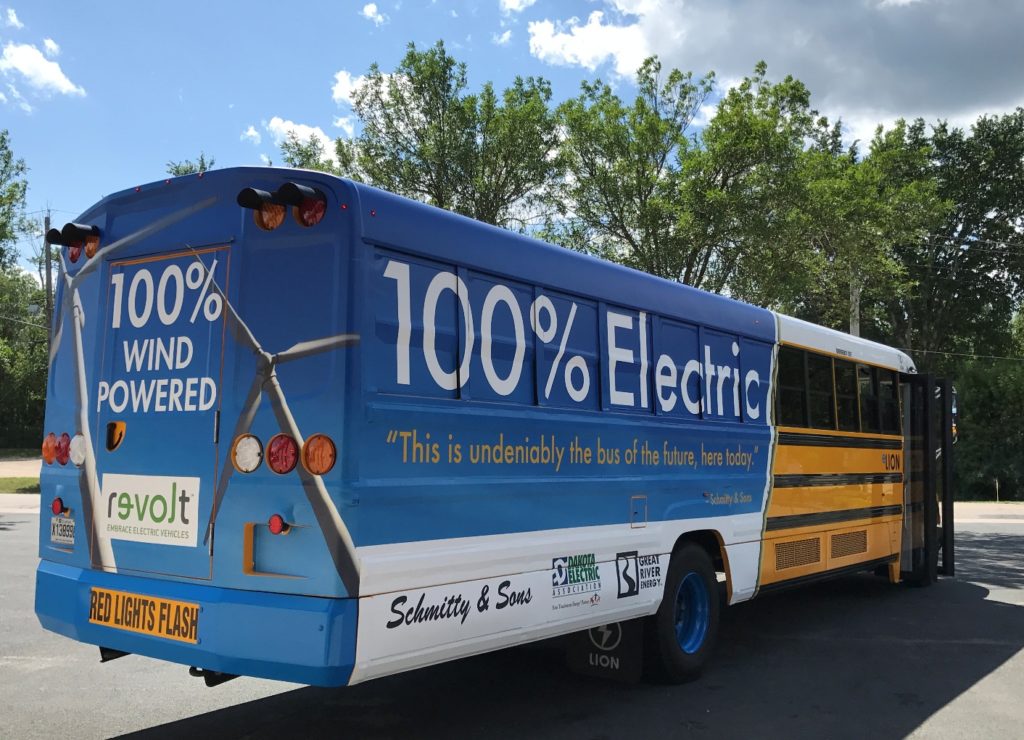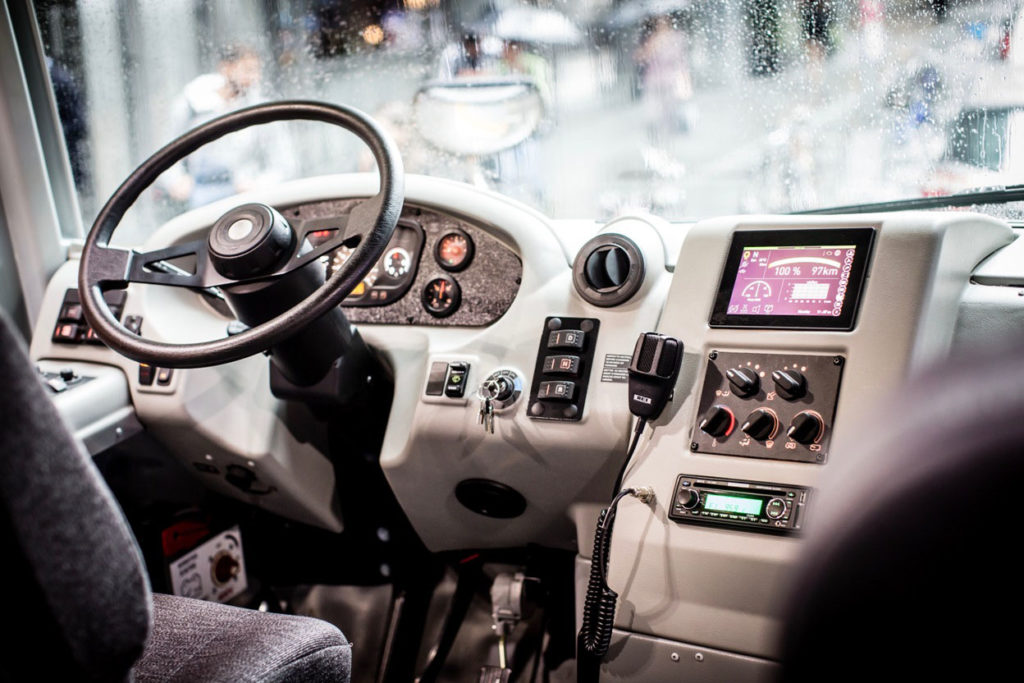
The wheels on the bus go round and round, without a drop of diesel.
When classes resume in the fall, some Minnesota students will enjoy a sweet ride on an all-electric school bus, thanks in part to two electric cooperatives.
“We want to showcase and demonstrate the technology in Minnesota,” said David Ranallo, manager of member services at Great River Energy. The Maple Grove-based G&T is teaming with distribution member Dakota Electric Association in Farmington and transportation provider Schmitty & Sons Transportation to bring the bus to Independent School District 194 in Lakeville, Minnesota.
“These buses go up to 100 miles. They get 20 percent more range from the regenerative braking they’ve got on board, and that produces efficiency when a vehicle stops and goes. And a school bus stops and goes its whole route,” said Ranallo.
And there’s no reason for parents to have range anxiety.
“The average route in the United States for a school bus is 60 miles. That can vary, of course, but we’ve seen that stays pretty true with even our more rural members in Minnesota,” said Ranallo. “That’s plenty of range for an electric school bus.”
It takes three to five hours to charge the bus, which means it can easily be plugged in during midday down time, or—better yet—overnight, when electricity demand is lower. But given that average route length, Ranallo said, “without a midday bump it can easily cover that route—even in cold weather.”
And to make sure it’s comfy on those winter days, the cabin is pre-warmed as the bus charges. There will be a supplemental heater that can run on propane or diesel, but Ranallo said it’s still the only electric school bus that has “zero emissions from the drivetrain.”
There are already about 90 electric school buses operating in North America. But they don’t come cheap. The bus, made by Quebec-based Lion Bus, comes with a starting sticker price around $325,000, which Ranallo noted is “almost three times a diesel bus.” That’s why the two co-ops and Schmitty & Sons Transportation will each pay a third.

“We’re trying to keep it close to parity with the cost of a traditional bus,” said Ranallo.
“Though it’s more expensive, the transportation provider ends up a big winner in this project because they save about $10,000 in maintenance and fuel costs a year, compared with a diesel school bus.”
“We are thrilled at the opportunity to bring this technology to our members,” said Jane Siebenaler, Dakota Electric business account executive. “Because of this collaboration, we are able to strengthen a member relationship, pilot cutting-edge electric bus technology and lay the foundation for what could be an excellent source of energy-efficient load growth.”
Great River Energy is working to secure about $1 million in state funding for a second phase, in which two more electric school buses would be purchased for some of its more rural areas. Ranallo said the G&T sees it as a chance to “showcase this technology so a lot of people can see that it works”—even in a cold weather place like Minnesota.
“We also want to document the regional economics and calculate exactly what the emission reductions are for these vehicles.”
But beyond that, Ranallo cites another reason Great River Energy is doing this.
“We think it is so co-op, as far as commitment to community, health of children of the members we serve, as well as a really great use of electricity.”
Michael W. Kahn is a staff writer for NRECA.